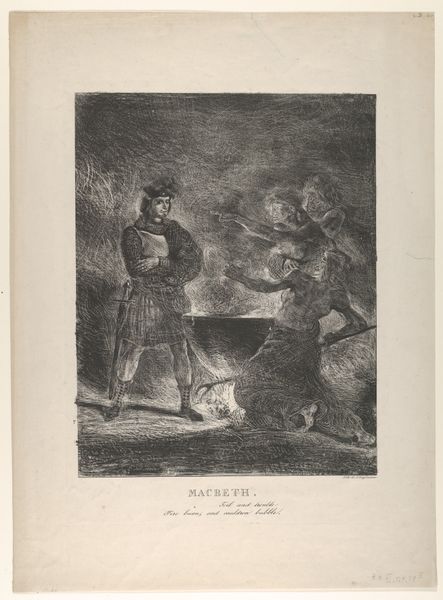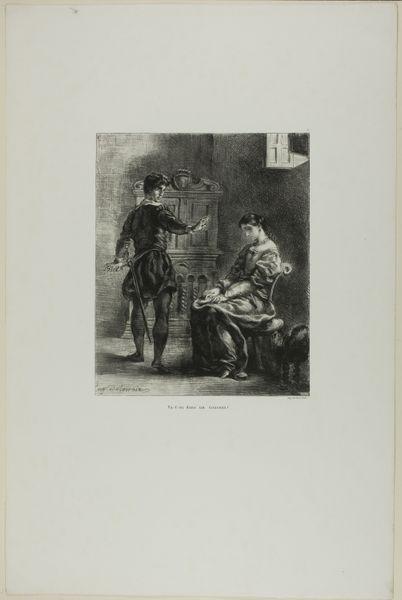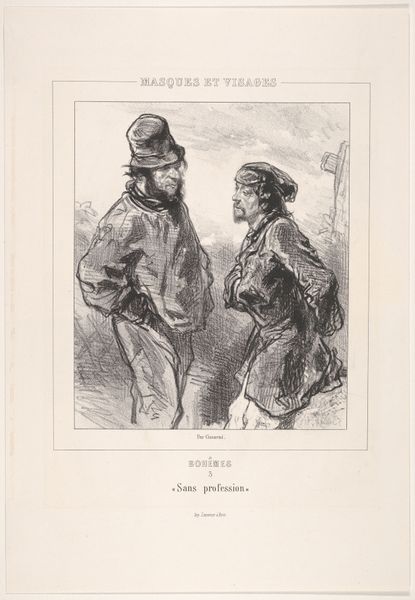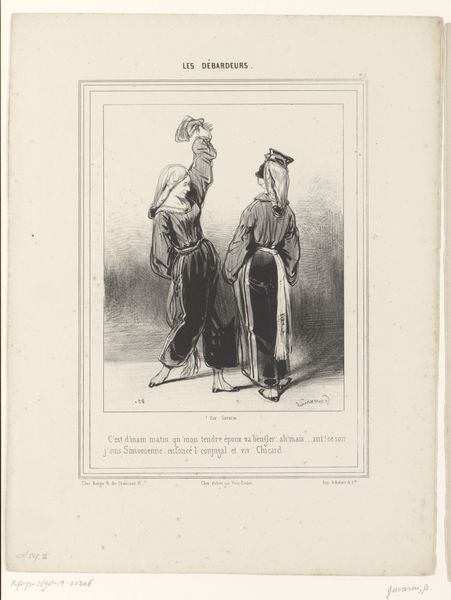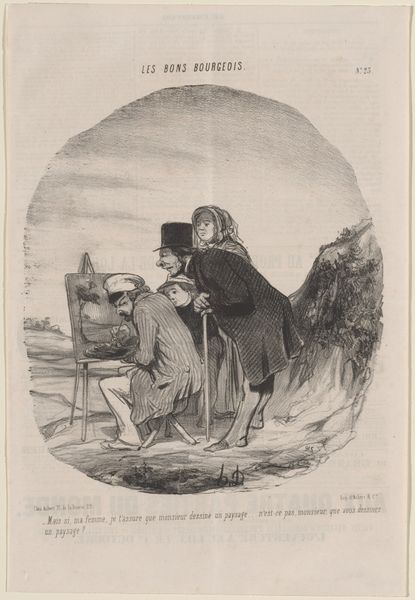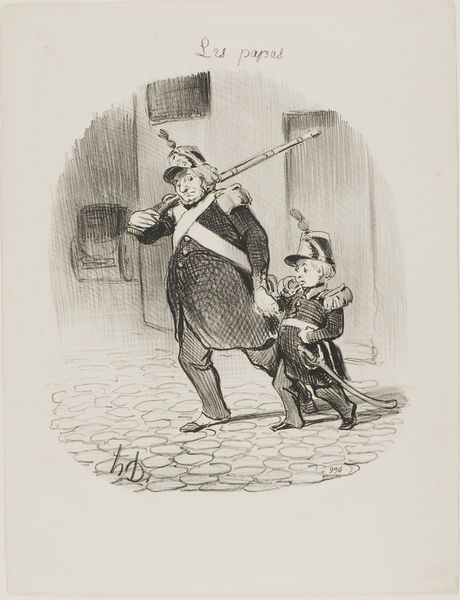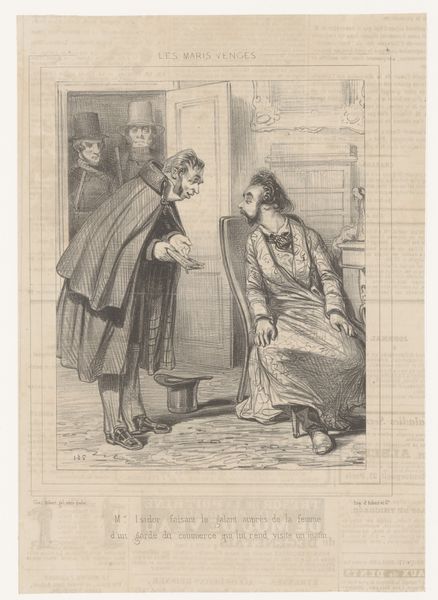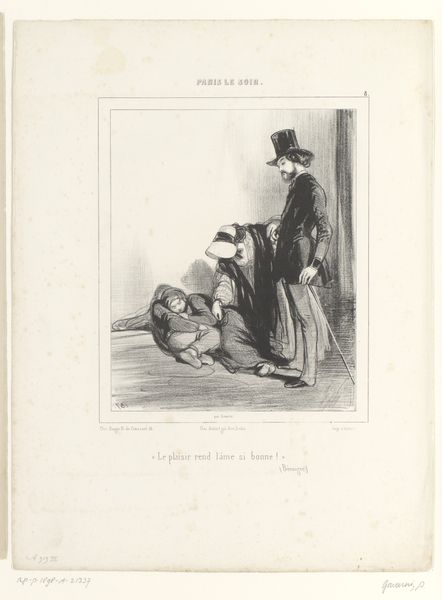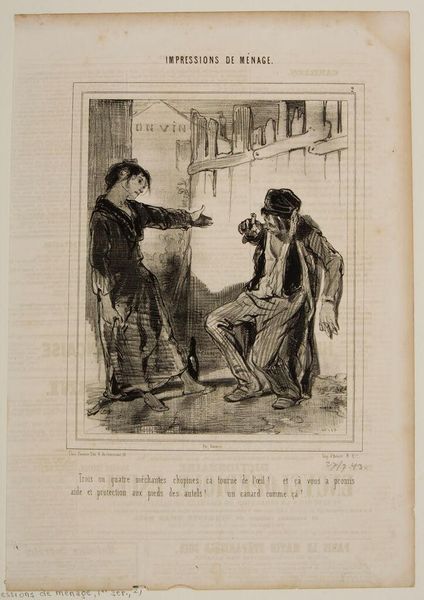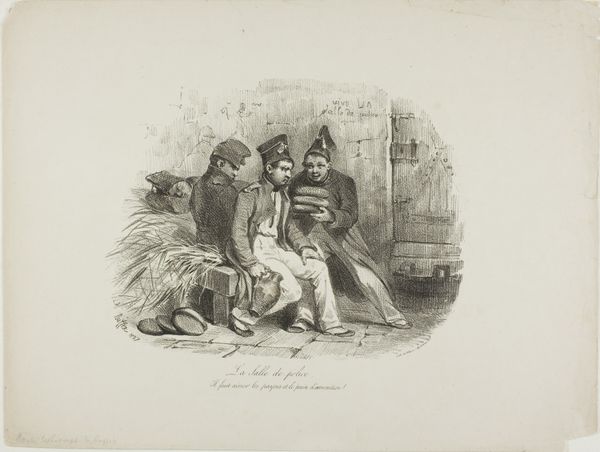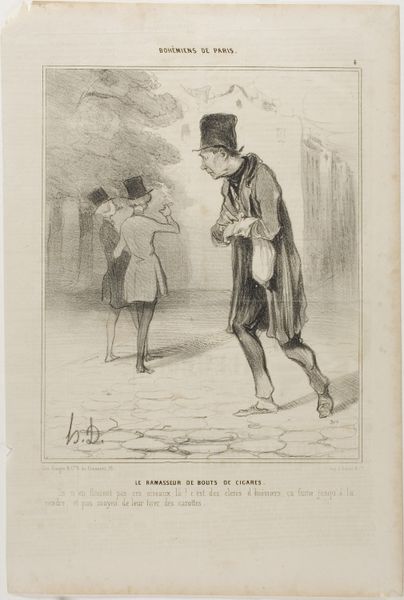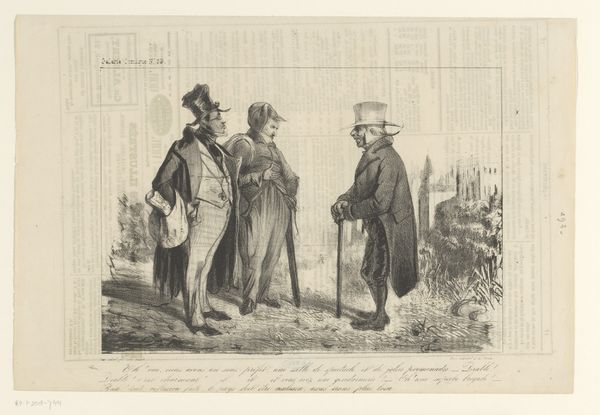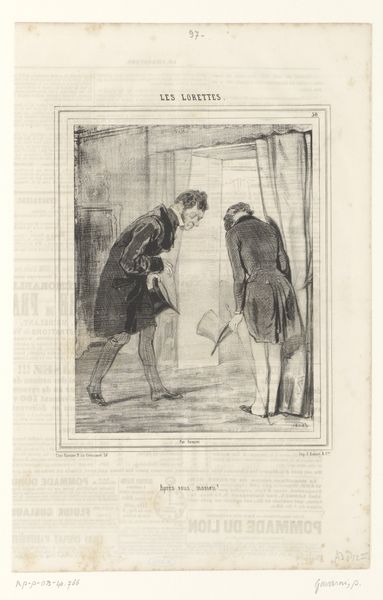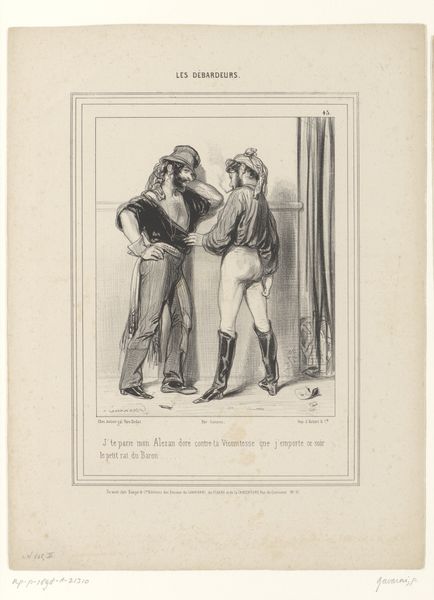
Faust, Mephistopheles and the Poodle, from Faust 1828
0:00
0:00
drawing, lithograph, print, paper
#
drawing
#
narrative-art
#
lithograph
# print
#
figuration
#
paper
#
romanticism
Dimensions: 238 × 209 mm (image); 307 × 247 mm (primary supprt); 425 × 284 mm (secondary support)
Copyright: Public Domain
Eugène Delacroix created this lithograph titled "Faust, Mephistopheles, and the Poodle" in the 19th century, amidst a period of social and political upheaval in France. Delacroix, deeply embedded in the Romantic movement, drew inspiration from Johann Wolfgang von Goethe’s "Faust," a cornerstone of German literature. Here, we see Faust and Mephistopheles, with a poodle close to the ground. The poodle represents a motif of temptation. This print delves into the seductive nature of power and knowledge, themes deeply resonant in a society grappling with the aftershocks of revolution and the rise of industrialization. Delacroix uses the narrative to explore the complexities of human desire and moral corruption. Delacroix, reflecting on the process of creating his "Faust" series, remarked on the challenge of translating Goethe's profound ideas into visual form. It wasn't just illustration; it was about capturing the emotional and psychological depths of the characters. The artwork prompts us to reflect on our own pursuit of ambition and the potential pitfalls of unchecked desire.
Comments
No comments
Be the first to comment and join the conversation on the ultimate creative platform.
